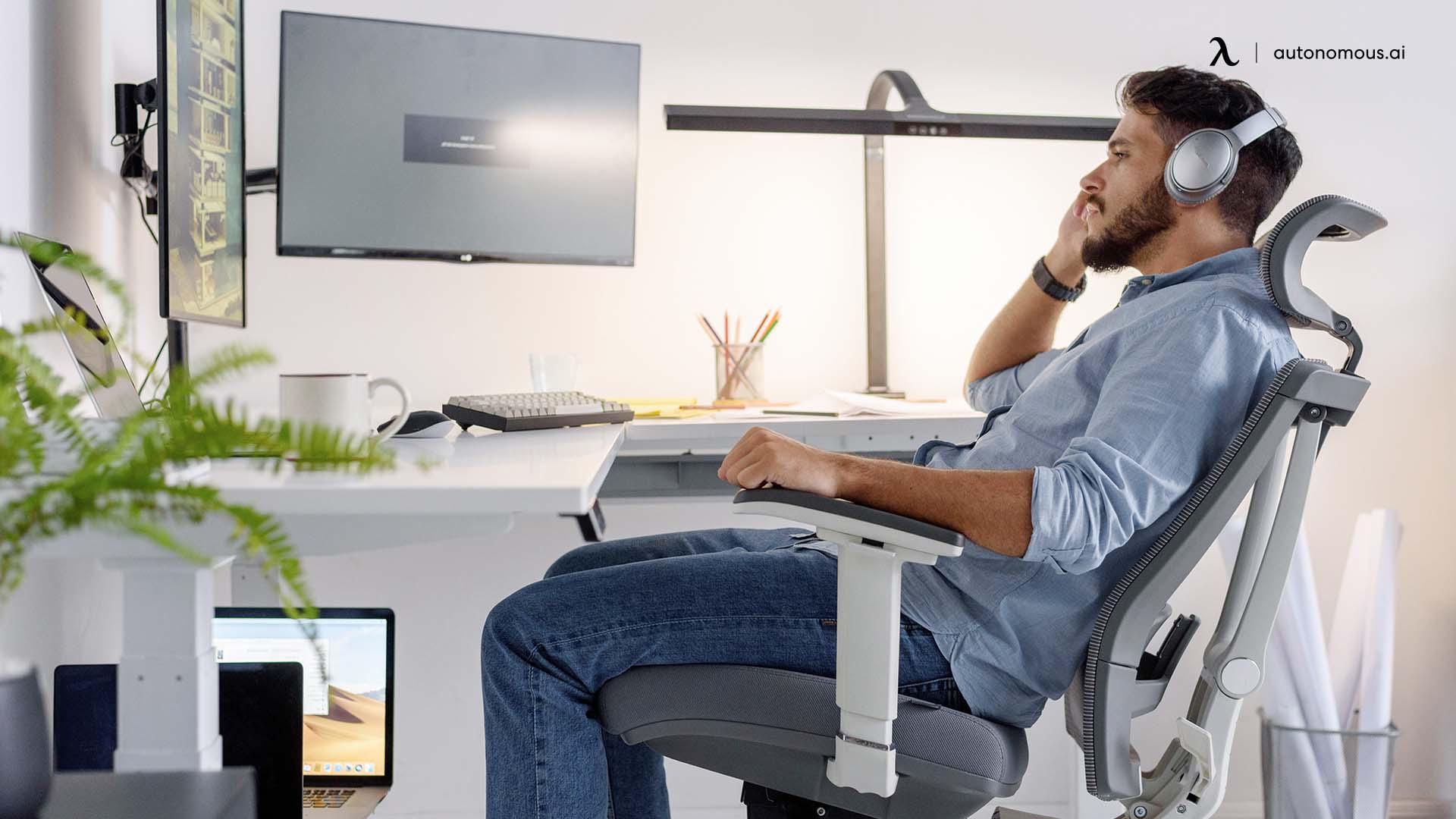
Table of Contents
For designers, a chair is not just a place to sit; it’s a vital tool for productivity and well-being. With long hours at the desk, designers need chairs that support their posture, adapt to their movements, and are built to last. Finding the best chair for graphic designers is about balancing ergonomics, adjustability, and aesthetics to create a workspace that enhances creativity and comfort. This guide dives into the top choices available in 2024, each tested for its unique features to help you make an informed decision.
Why Does a Designer Need a Good Ergonomic Chair?
A designer ergonomic office chair offers excellent lumbar support, which helps prevent back pain while allowing you to work more comfortably for extended periods. Graphic designers commonly suffer from back pain because they don't sit properly in ordinary office chairs.
The design incorporated in an ergonomic office chair for creative workers combats this back pain and encourages proper spinal alignment. This is because the construction of these chairs is equipped to mimic the natural curvature of your spine.
Proper spinal alignment promotes sitting posture, which improves the natural alignment of your spine, hips, and shoulders. Thus, reducing abnormal strain on your body while preventing harmful seated postures like leaning forward or slouching.
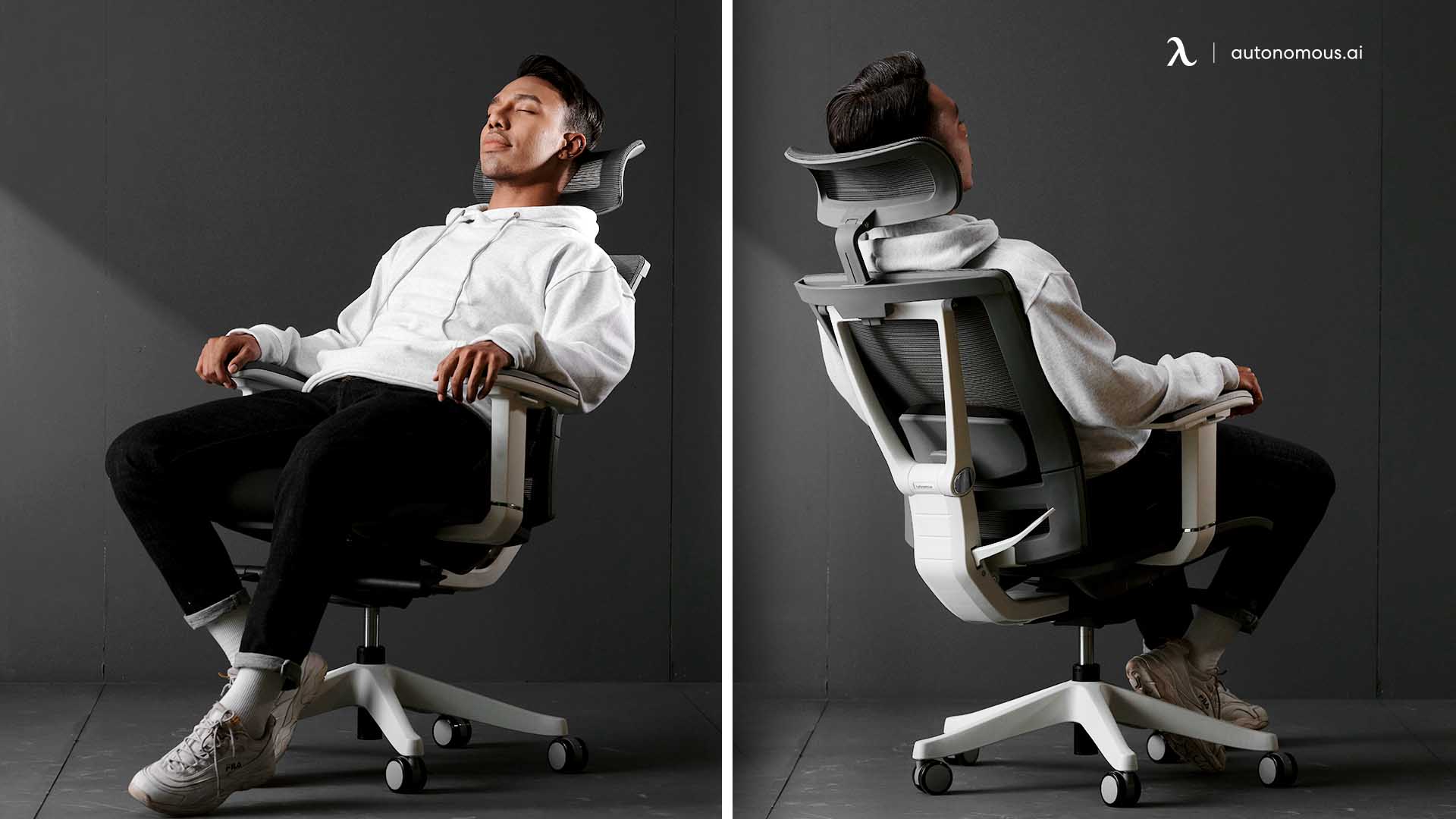
What Should You Consider When Purchasing a Designer Ergonomic Chair?
To choose the right designer ergonomic office chair for a designer desk, you should consider several factors making up the design of these chairs. Such elements include:
Seat Material
The material included in your designer ergonomic office chair should have enough padding for optimal comfort when seated for extended periods. Additionally, you should consider chairs that are constructed with breathable fabric, like mesh.
Such material enhances breathability and maximizes airflow to ensure you remain refreshed even when you’re seated for extended periods. Leather isn’t a suitable option because it can cause sweat to build up while you’re seated, which can cause discomfort.
Backrest
The backrest included in an ergonomic office chair for designers should be between 12 and 19 inches wide. If this backrest is separated from the seat, you're required to adjust it in both angle and height. Additionally, your spine's natural curvature should be supported by this backrest with special attention being shown to the lumbar region.
In contrast, if this office chair is designed with the backrest and seat being one piece, you should have the ability to adjust it backward and forward. A locking mechanism works to secure these angles from moving too far backward once you're seated, which is beneficial for optimal support.
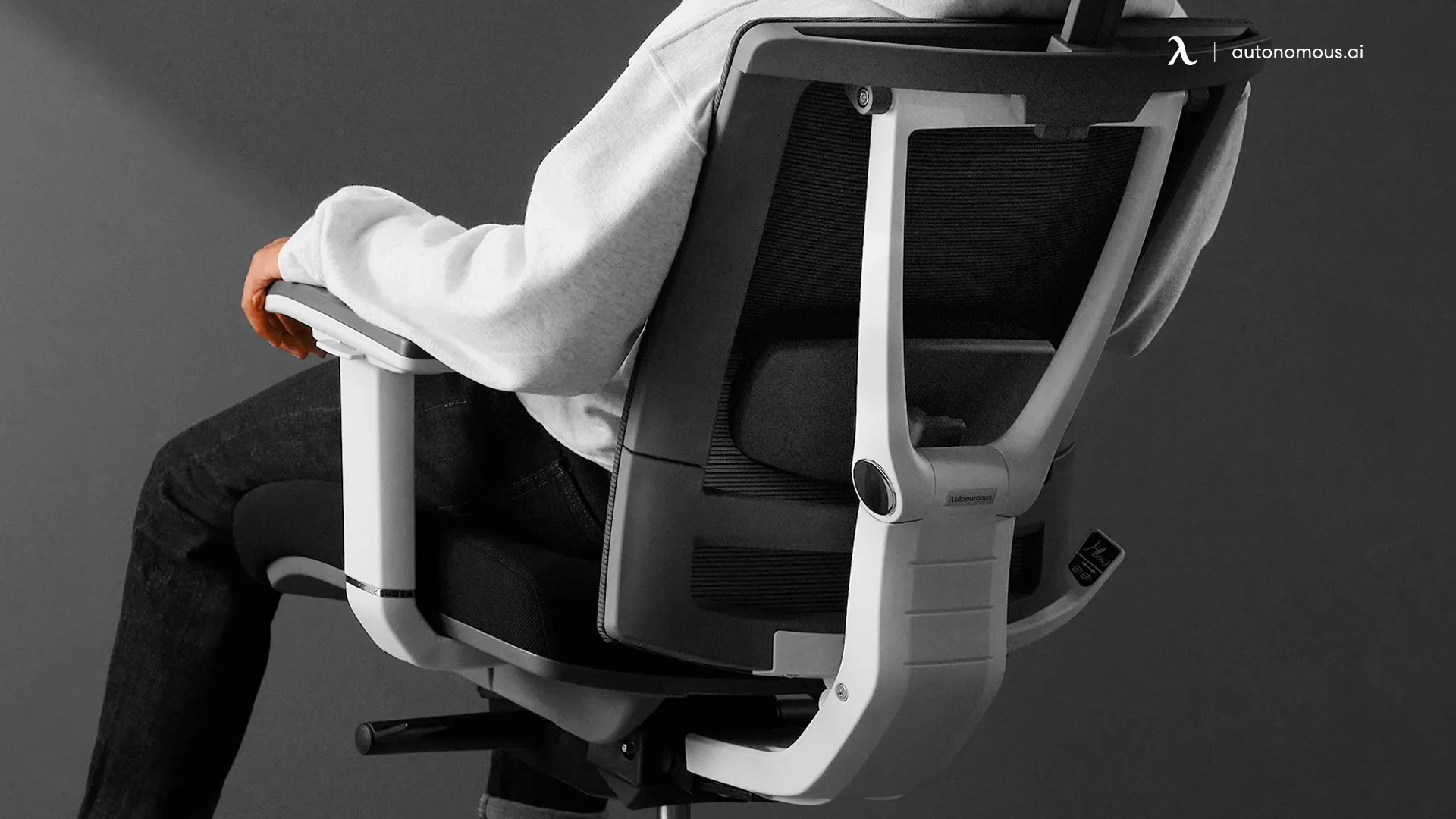
Lumbar Support
Lower back support in an ergonomic chair is vital. Your lumbar spine has an inward curve. Not offering support to this area while seated for extended periods can lead to slouching. This flattens your spine's natural curvature while straining the structures in your lower lumbar region.
When purchasing a designer office chair, you should choose designs that include a lumbar support system with height and depth. Having such features ensures you provide the right support to your lower back's inward curvature.
/https://storage.googleapis.com/s3-autonomous-upgrade-3/static/upload/images/new_post/4-best-ergonomic-chair-brands-flagship-products-1753-1619184327797.jpg)
Seat Depth and Width
Your ergonomic chair should be equipped with enough depth and width to support your body comfortably. This is generally 17 to 20 inches wide while the depth (back to the front of the seat) needs to have enough space for you to sit. Your spine should be placed against the backrest while leaving approximately two to four inches between the chair's seat and the back of your knees. Additionally, you should be able to adjust your seat's backward tilt.
Seat Height
The seat height included in your designer office chair should be easily adjustable. When finding this feature, you should seek a pneumatic adjustment lever in this design, as it offers the easiest way to make such adjustments.
A seat height ranging from 16 to 21 inches from the floor should work for most graphic designers. Such range allows users to have their feet on the floor while their thighs remain horizontal and arms even with the desk’s height.
Top 5 Chairs for Designers in 2024
These five designer desk chairs provide the best blend of ergonomic support, style, and adaptability. After testing each, here’s an in-depth review of each to help you find the perfect fit for your creative space.
1. Autonomous ErgoChair Pro
/https://storage.googleapis.com/s3-autonomous-upgrade-3/production/ecm/240715/1(1).jpg)
Autonomous ErgoChair Pro
| Dimensions | 29”L x 29”W x 46” - 50”H |
|---|---|
| Seat dimensions | 20”L x 20”W |
| Seat height | 18” - 20” |
| Back dimensions (w/o headrest) | 21”W x 22”H |
| Back dimensions (with headrest) | 21”W x 28” - 31”H |
| Tilt range | 22° |
| Armrest height | 11” - 14” |
| Armrest height (from the floor) | 26.7” - 32.2” |
| Caster wheel diameter | 2.36 inches |
| Number of caster wheels | 5 pieces |
| Materials | Polyester fabric with molded foam interior and durable nylon plastic frame; PU handrest pads. |
| Colors | Cool Gray, Evergreen, All Black Red Apple, Black & White, Baby Blue |
| Weight capacity | 300 lbs |
| Item weight | 48.5 lbs |
| Shipping dimensions | 29”L x 27”W x 19”H x 67 lbs |
| Assembly required | Yes |
| Warranty | 2 years |
| Free returns | 30 days The trial and return policy does NOT apply to products on sale. |
| Adjustability | Headrest, armrest, back tilt angle and tension, seat tilt and height. |
| Pros | Cons |
| 9 adjustable points, including headrest, armrests, and seat height, ensure personalized comfort. | Assembly required: May be challenging for some users. |
| Synchro-tilt mechanism: Reclines at a 2-to-1 ratio for balanced lower back and leg support. | Weighs 48.5 lbs, making it harder to move. |
| Breathable mesh: Prevents overheating, keeping you cool and focused. | |
| Flexible lumbar cushion: Adapts to your spine's curve, reducing pain and stiffness. | |
| Available in multiple stylish colors. | |
| Supports up to 300 lbs with a durable nylon plastic frame. |
The Autonomous ErgoChair Pro immediately feels like it’s built with designers in mind. After spending hours tweaking everything from the lumbar support to the seat tilt, I can confidently say this ergonomic office chair is all about custom comfort. The first thing I noticed was the ease of adjustability – nearly every part of the chair can be fine-tuned, from the backrest tilt to the headrest height. As a designer, I spend hours looking at screens, switching between my computer, tablet, and sketchpad, and the ErgoChair Pro’s adaptive backrest really supports those shifts in posture without any strain on my back.
One standout feature is the breathable mesh backrest, which keeps things cool even on long days. It’s surprisingly firm, providing excellent lumbar support, which I didn’t realize I needed until I spent a full day in it. I can actually feel the tension in my lower back easing as I sit, which is a game-changer after years of hunching over my desk. The seat cushion is soft yet supportive, and the armrests are perfect for keeping my arms in a relaxed position while typing or sketching.
2. Autonomous ErgoChair Ultra 2
/https://storage.googleapis.com/s3-autonomous-upgrade-3/production/ecm/241004/1(2).jpg)
ErgoChair Ultra 2
| Dimensions (w/o headrest) | 28”L x 28”W x 41” - 46”H |
|---|---|
| Dimensions (with headrest) | 28”L x 28”W x 49” - 58”H |
| Seat dimensions | 18”L x 18”W |
| Seat depth range | 18” - 20.5” |
| Seat height | 18” - 23” |
| Headrest | 8" - 12" |
| Back dimensions | 20”W x 23”H |
| Tilt range | 25° |
| Armrest height | 7” - 11” |
| Armrest height (from the floor) | 23.5” - 27.7” |
| Caster wheel diameter | 2.56 inches |
| Number of caster wheels | 5 pieces |
| Materials | 100% TPE and polyester fabric upholstery with ABS plastic frame, aluminium base |
| Colors | Onyx Black, Dover Gray |
| Weight capacity | 320 lbs |
| Item weight | 36.5 lbs |
| Shipping dimensions | 28”L x 17”W x 31”H x 45 lbs |
| Assembly required | Yes |
| Warranty | 2 years |
| Free returns | 30 days |
| Adjustability | Headrest, armrest, back tilt angle and tension, seat height. |
The Autonomous ErgoChair Ultra 2 takes customization to a whole new level. This chair feels like it’s tailor-made for designers who spend long hours working. The ergonomic design allows you to make adjustments in more ways than I thought possible. The headrest adjusts in height and angle, and the armrests can be positioned at the perfect height and angle for typing, drawing, or just relaxing.
One thing that stands out with this designer office chair is the invisible lumbar support. It adjusts based on how I sit, which makes it feel like the chair is actively supporting me, rather than just providing a static cushion. I tested this by moving between a leaned-back position while brainstorming to a more upright position while focusing on detailed work. The chair adapts effortlessly, which I think makes it a solid investment for anyone who needs to focus on their posture for prolonged periods.
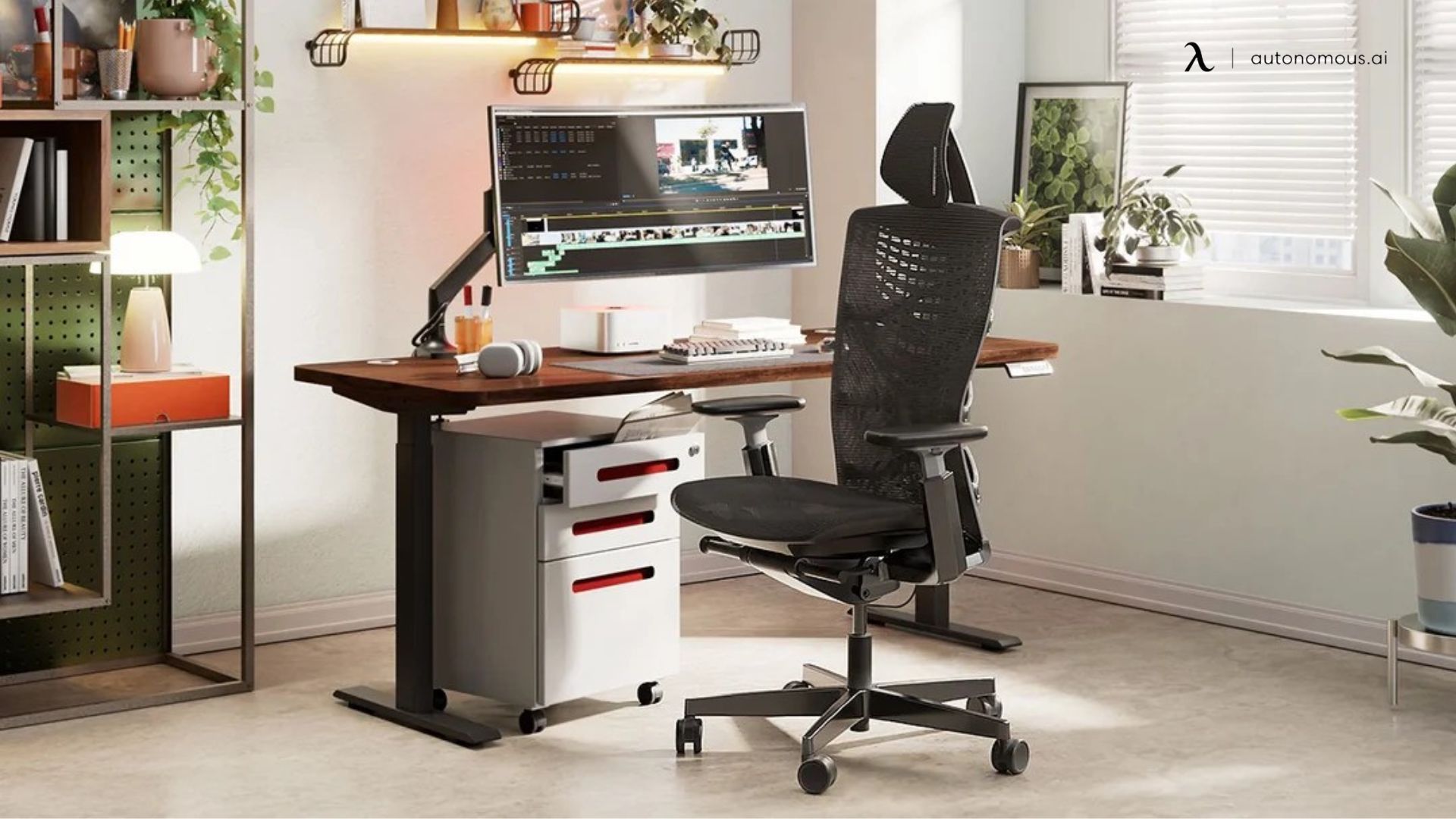
The 4-layer seat is dense but soft enough for comfort, and I never felt any pressure build-up, even after hours of sitting. It’s clear that Autonomous put a lot of thought into this model, making it a fantastic option for anyone in a creative field.
3. Herman Miller Cosm Chair
The Herman Miller Cosm Chair feels like sitting in a cloud – and not just because of the high price tag. This chair offers an experience that’s completely different from anything else I’ve tried. The Auto-Harmonic Tilt feature is genuinely impressive, as it provides support based on my weight and posture the moment I sit down. I didn’t have to fiddle with any knobs or settings; the chair somehow seems to know exactly how to position itself to keep me comfortable.
For designers who switch between sitting upright for detailed work and leaning back for brainstorming or thinking, the Cosm is ideal. The Intercept suspension fabric adds a layer of flexibility and breathability that’s a welcome relief after hours at the office desk. The chair’s flexibility surprised me, especially with its minimalist design, and the weightless support it offers is like nothing else – I felt completely cradled, even when leaning far back.
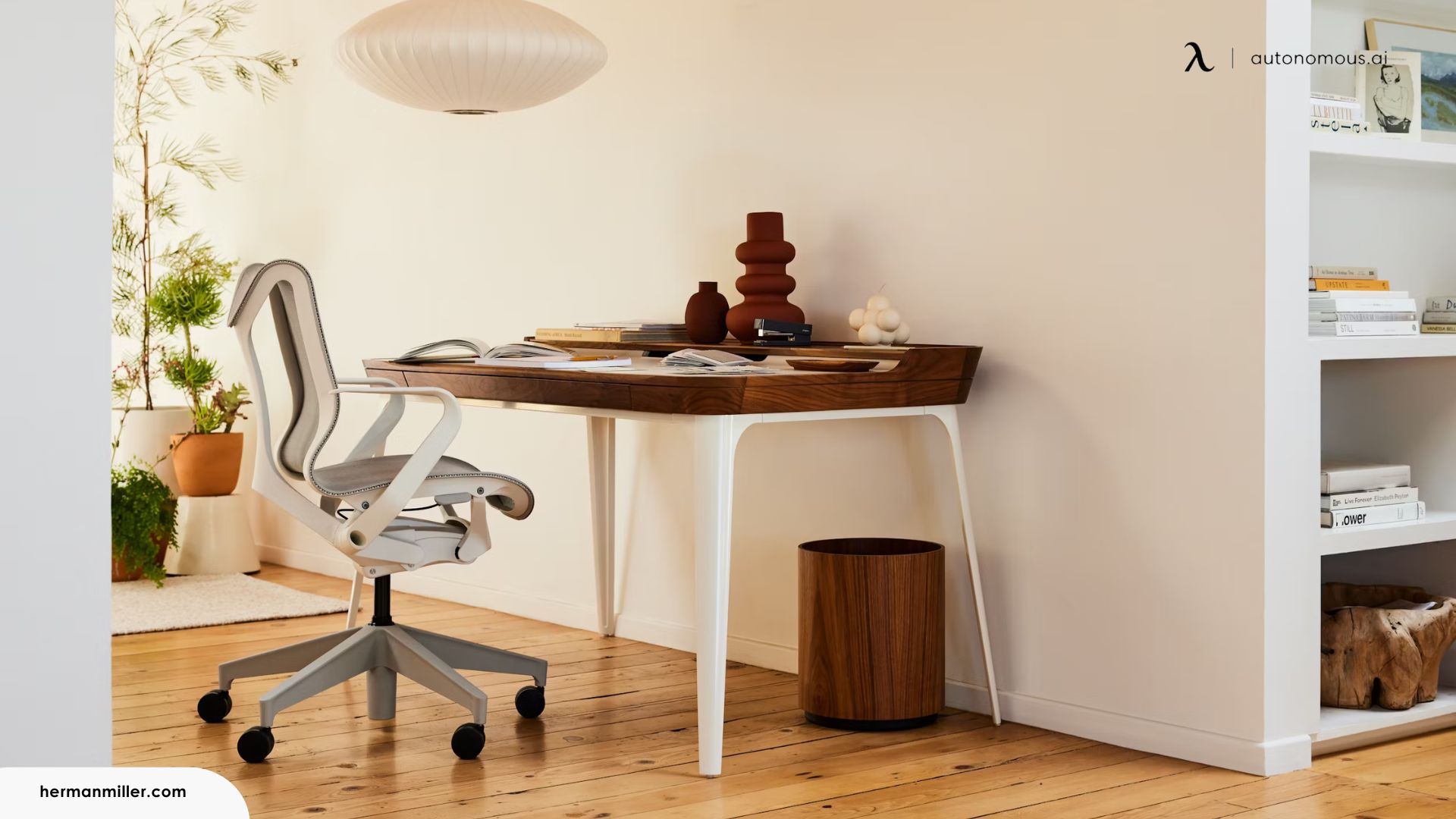
Another fun aspect is the Cosm’s color customization. I opted for the “dipped-in-color” option to match my workspace, which adds a unique, personal touch. And with Herman Miller’s 12-year warranty, I felt the quality of this chair is more than just skin-deep.
4. Ovios Ergonomic Office Chair
When I unboxed the Ovios Ergonomic Office Chair, my expectations were tempered by its more budget-friendly price. But this chair punches above its weight in terms of comfort and style. The suede-like fabric has a soft, luxurious feel that brings a bit of class to my workspace. Plus, it’s super easy to clean – always a plus for those of us who snack at the desk.
The high back and built-in lumbar support immediately felt supportive, though not as adjustable as some pricier chairs. The height and tilt adjustments are straightforward, and the chair has a satisfying recline angle that makes it easy to kick back and relax in between projects. Although it lacks the high-end ergonomic features of the other high-back office chairs, the Ovios still manages to provide solid support for those long work hours.
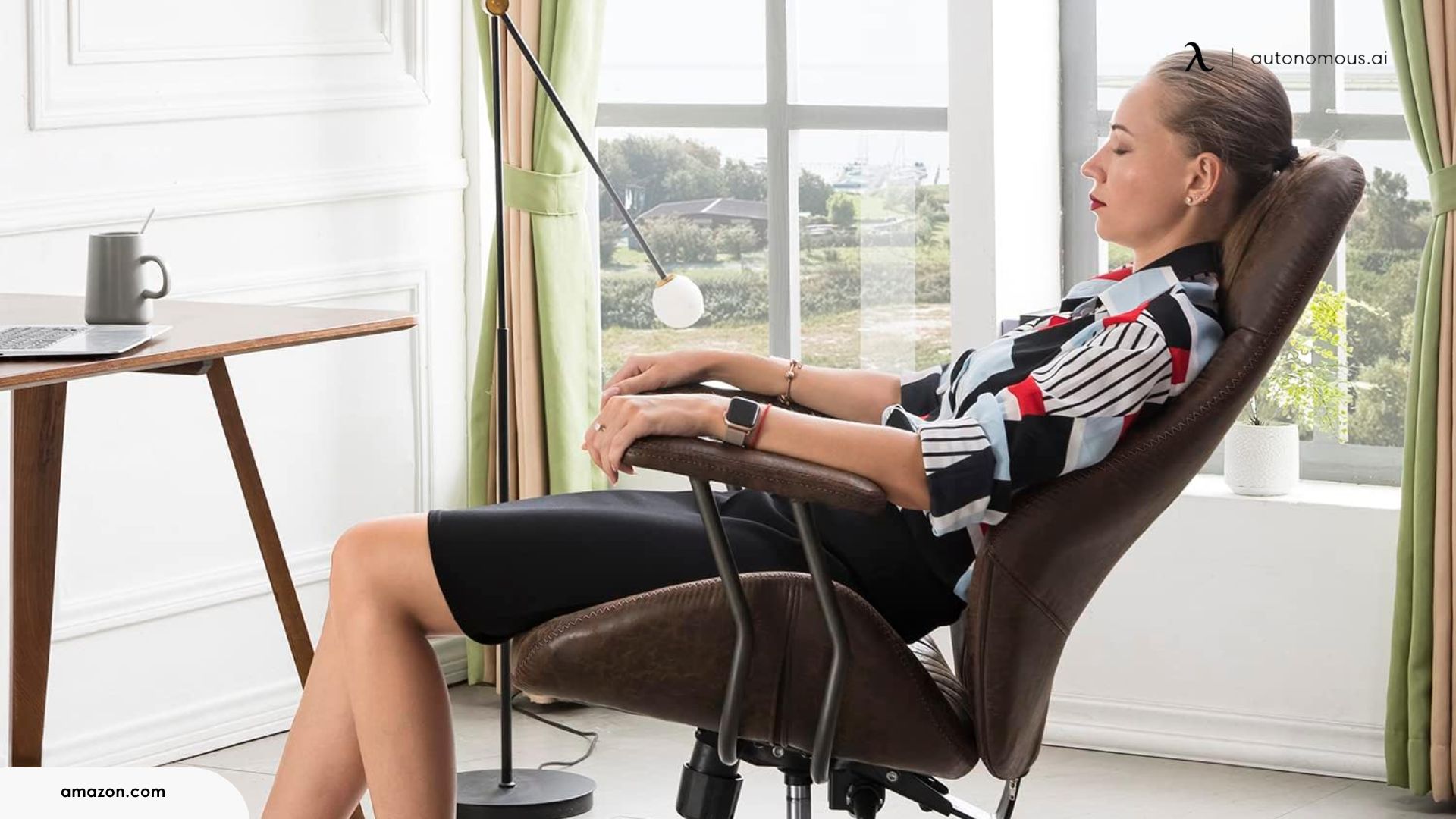
What I appreciated most was the seat depth and cushioning. Unlike some budget designer office chairs that go flat after a few hours, this one stayed comfortable all day. The fabric doesn’t get as hot as leather or certain types of mesh, which is a pleasant surprise, especially in warmer months.
5. Vernal Ergonomic Chair S-Series
The Vernal Ergonomic Chair S-Series is a delight for those who care about both function and aesthetics. The Danish-inspired design adds a sophisticated edge, and the mix of vibrant cushion color choices made it easy to match it with the decor in my studio. But beyond the looks, the ergonomic features are on point. The chair has adjustable seat height, depth, and tilt, which is ideal for switching between tasks without straining.
The breathable mesh backrest provides a surprisingly effective level of support. The back feels flexible and airy, which keeps me cool even during those marathon work sessions. The chair also comes with a detachable, free extra cover, which is a nice touch for those of us who like changing things up.
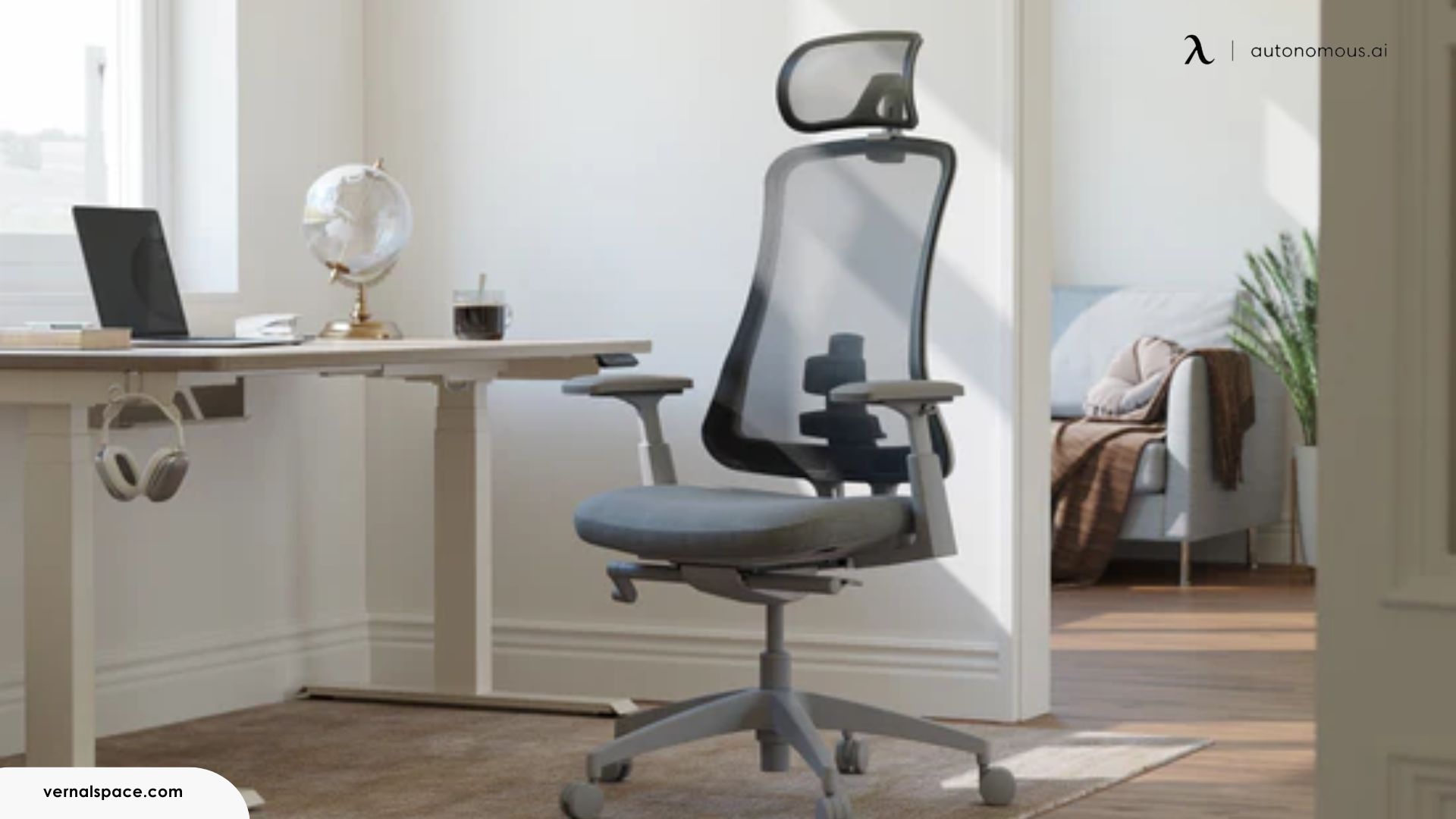
The seat cushion is firm but comfortable, and the adjustable armrests are handy when I need more support while typing or using a graphics tablet. This ergonomic chair for back pain feels durable, and I appreciate the quality materials used throughout. The mesh backrest and well-cushioned seat really stand out as high-quality features that are hard to find at this price point.
6. Steelcase Gesture
The Steelcase Gesture is designed to support a wide range of postures, and it does exactly that. I was immediately impressed by the 3D LiveBack technology, which adapts to my movements and mimics the natural curve of my spine. This is perfect for designers who need to shift positions frequently; whether I’m leaning forward to sketch or reclining back for a brainstorming session, the Gesture keeps my spine aligned without needing any manual adjustments.
The 360-degree armrest adjustments are a revelation. I can bring the armrests close for typing, push them out for tablet work, or even lower them when I want my arms totally free. I’ve never experienced such versatile armrests in a chair before, and it genuinely makes a difference in comfort.
While the Gesture is on the pricier side, it’s clearly built for durability. The materials feel sturdy, and the seamless movement of the chair as it follows my body’s natural posture changes makes it ideal for all-day use. It’s a powerhouse of ergonomic design that I can genuinely recommend for anyone serious about their workspace setup.
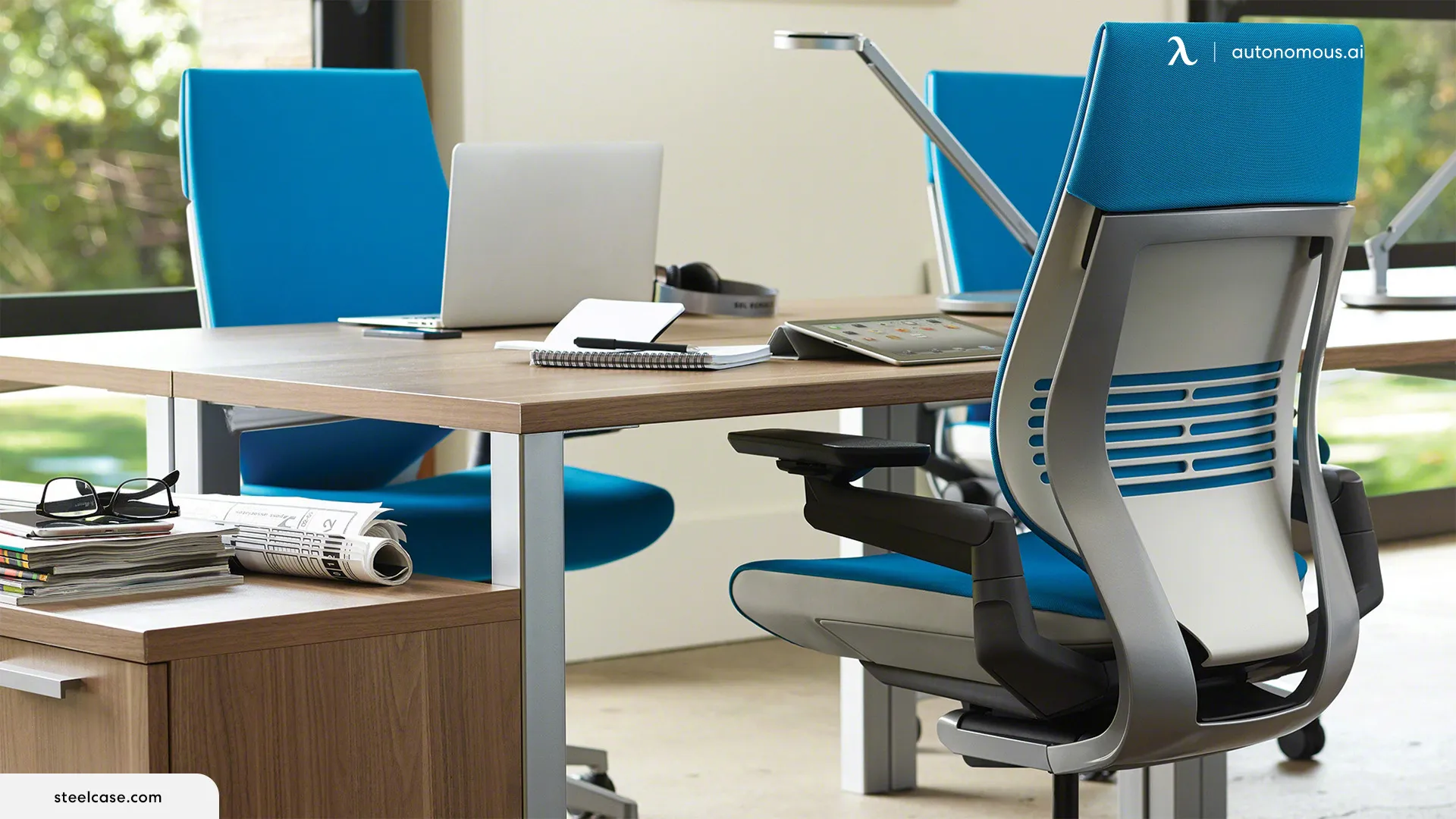
Conclusion
Each of these chairs offers a unique approach to comfort and design, making them suitable for different kinds of users. Whether you’re on a budget or willing to invest in top-of-the-line ergonomics, there’s something here that fits every designer's needs. Having experienced these options, I’d say it’s worth prioritizing your comfort, as the right chair can make all the difference in your productivity and well-being.
By considering your specific needs and workspace requirements, you’ll be well on your way to selecting the ideal chair that supports both your posture and your creativity.
Stay connected with us!
Subscribe to our weekly updates to stay in the loop about our latest innovations and community news!
Interested in a Link Placement?
Spread the word
.svg)


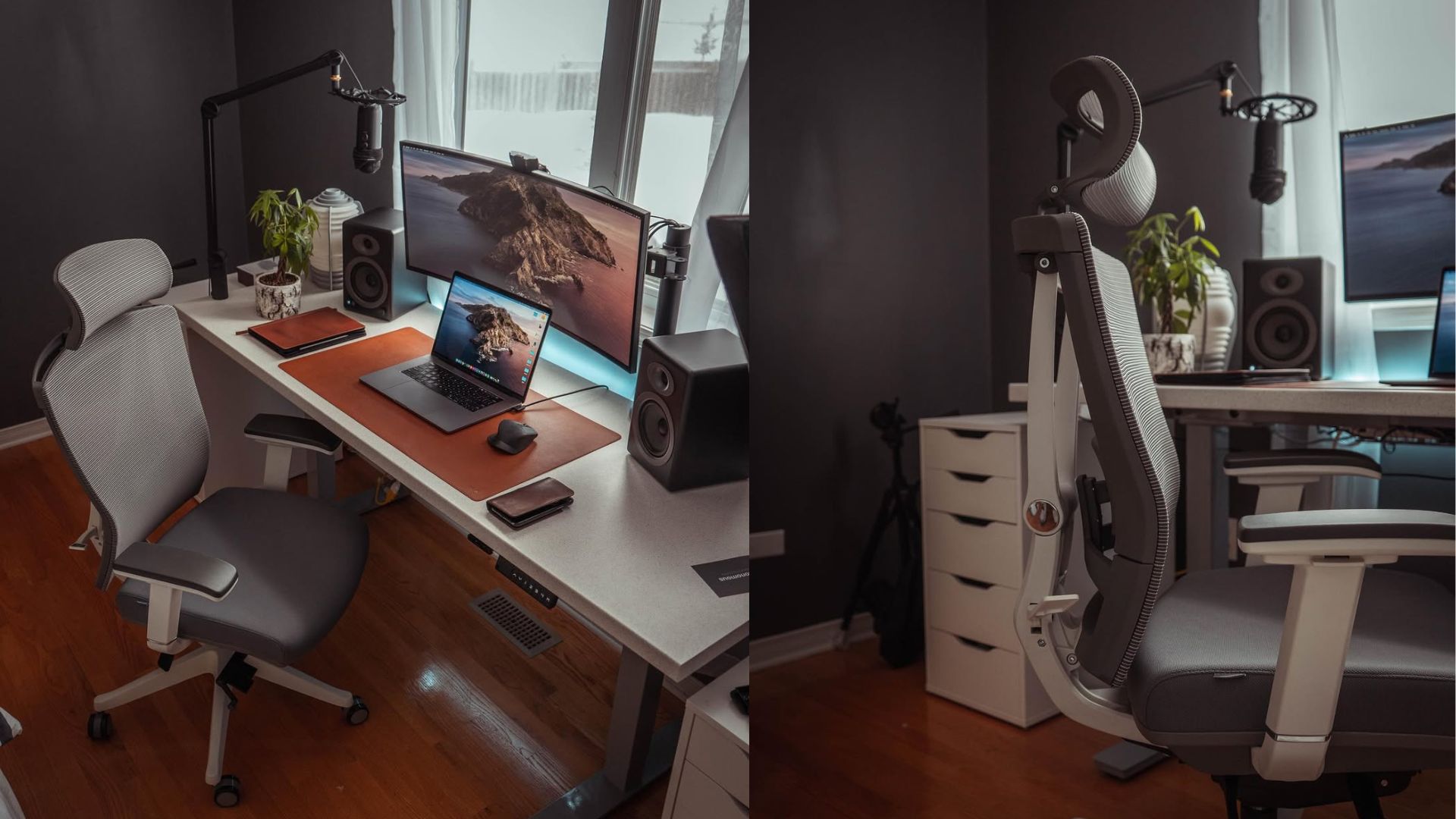
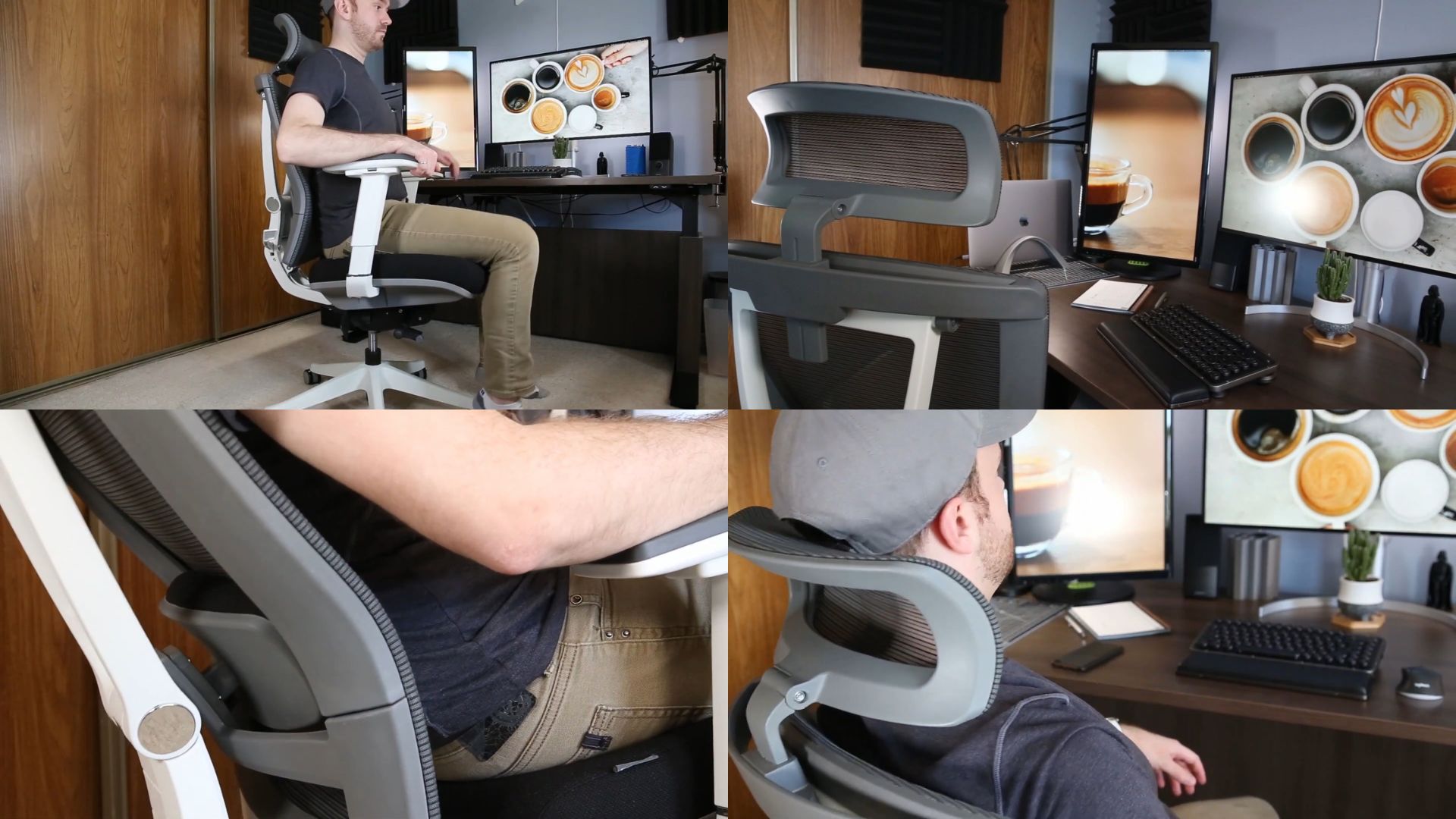
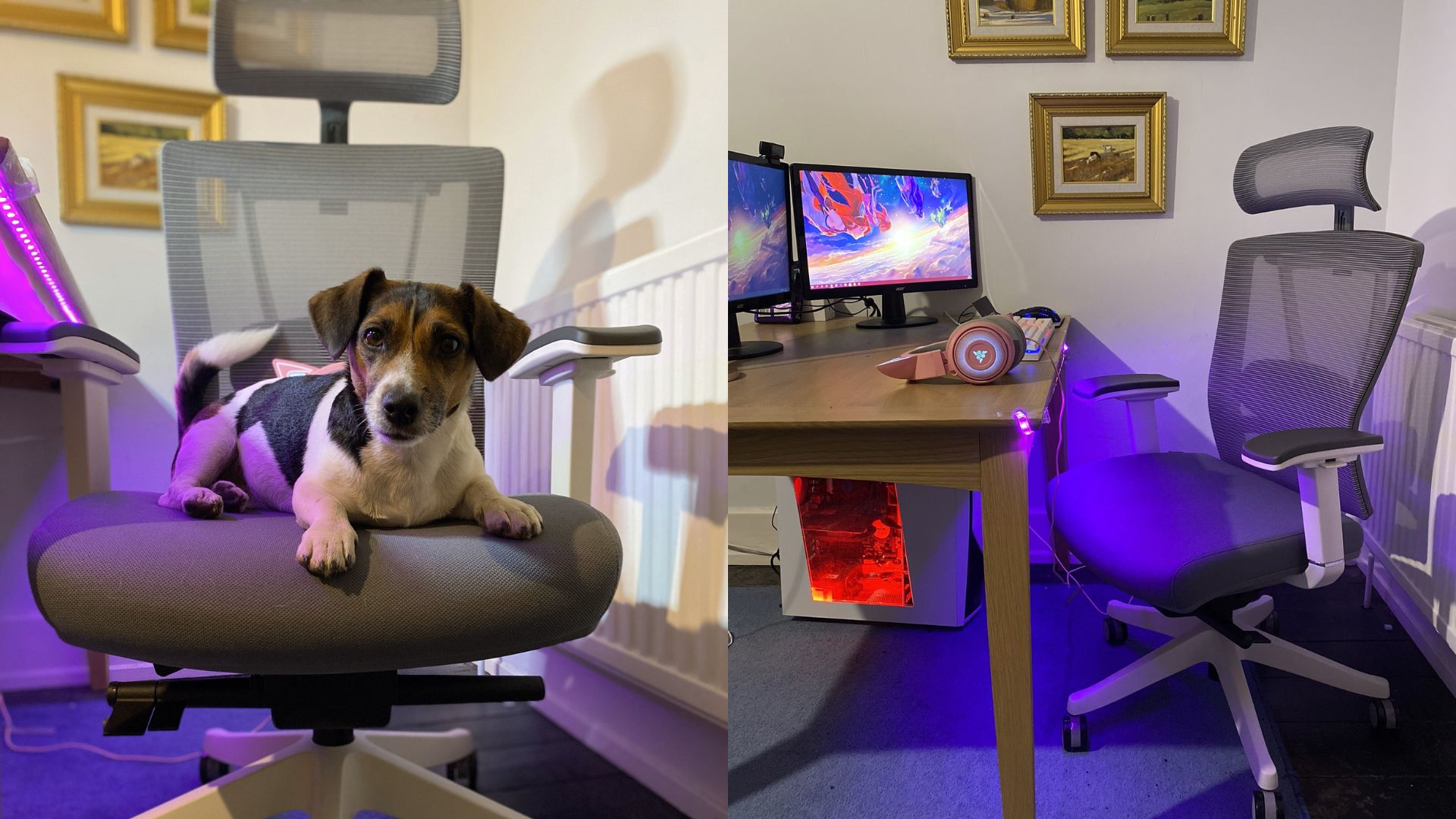
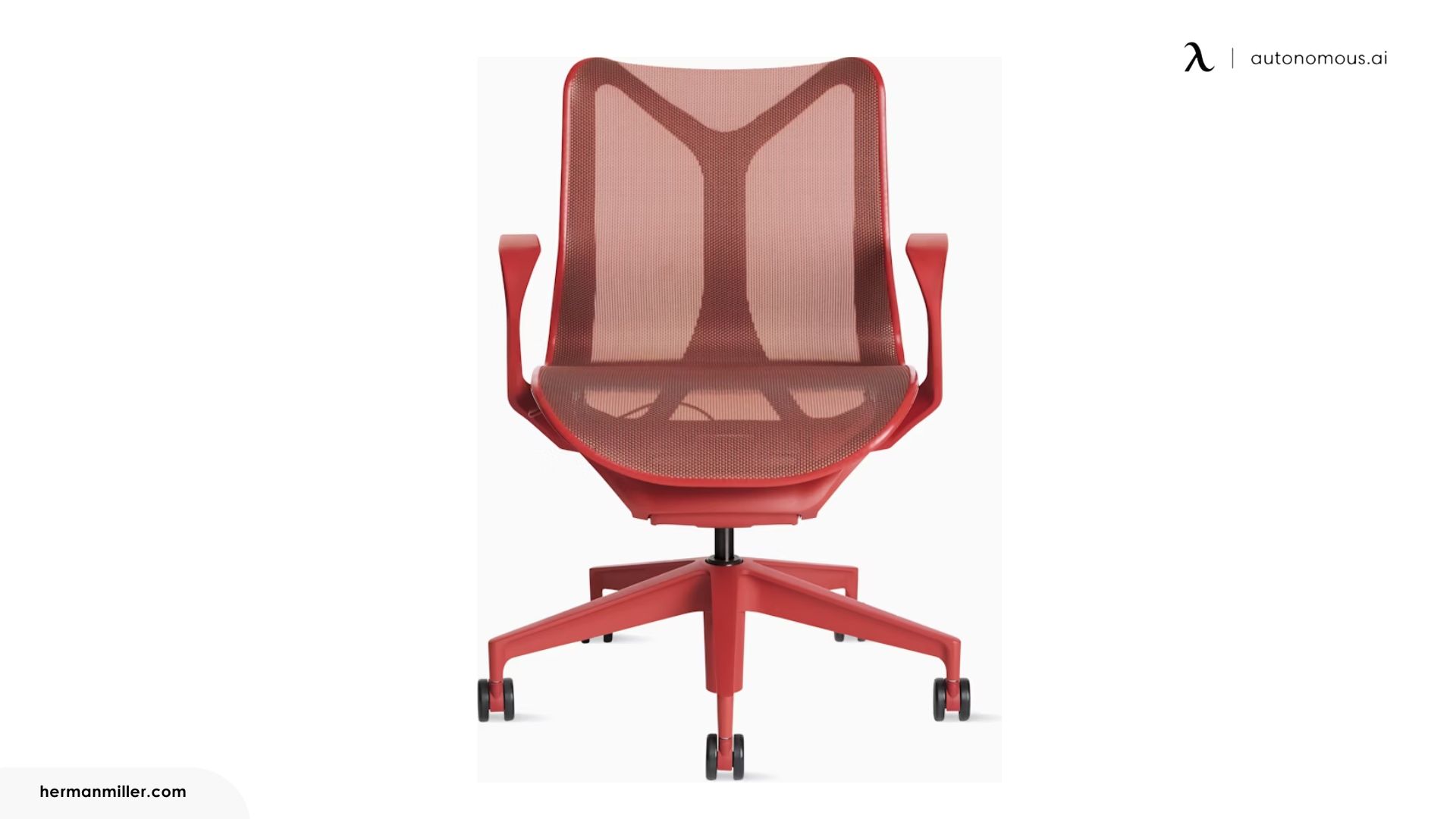


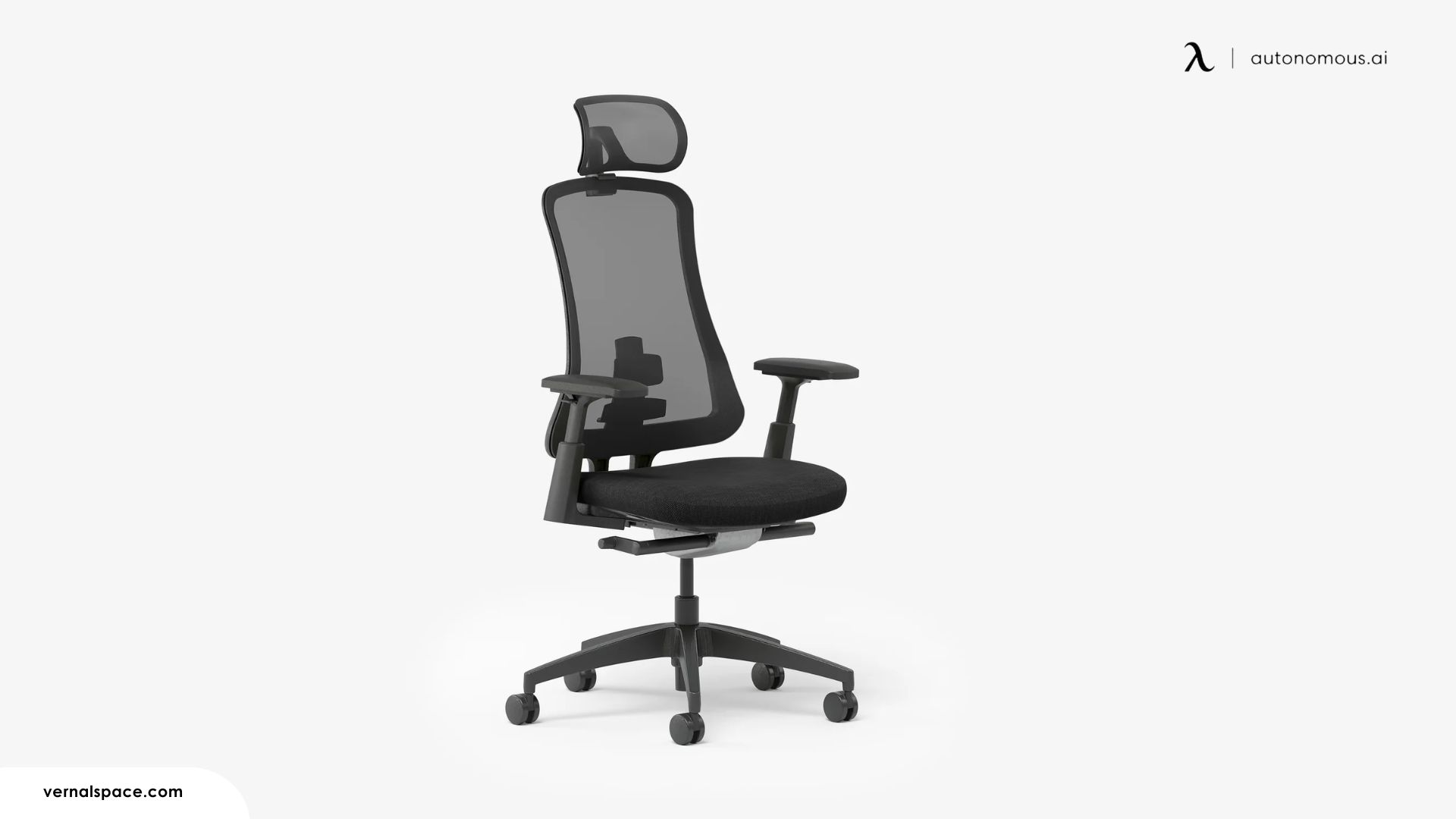

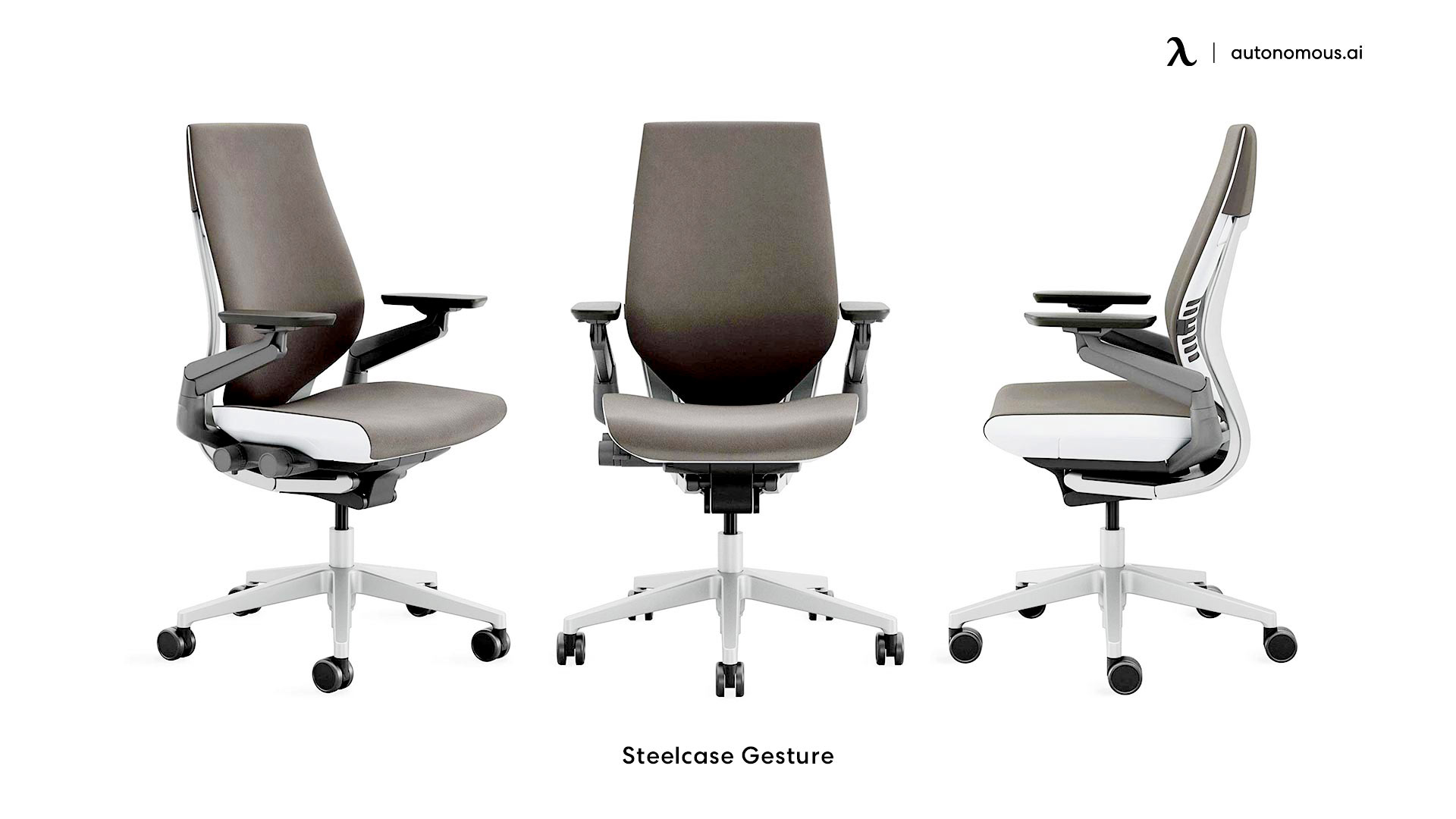


/https://storage.googleapis.com/s3-autonomous-upgrade-3/production/ecm/230914/bulk-order-sep-2023-720x1200-CTA-min.jpg)

/https://storage.googleapis.com/s3-autonomous-upgrade-3/production/ecm/230824/Mark-074a7a11-ff01-44fd-a204-55d192ab5798.jpg)